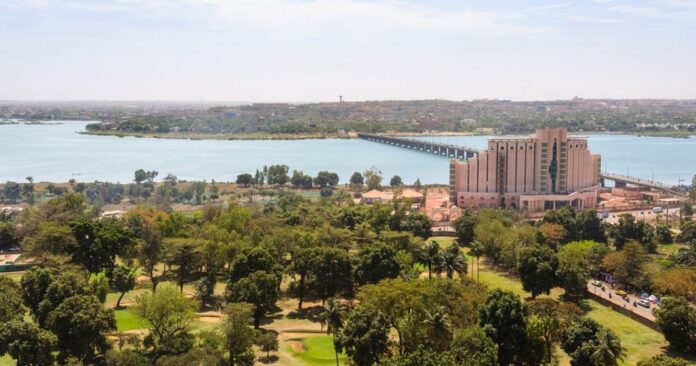The West African nation of Mali is famous for three things: the expansive Sahara Desert, Mansa Musa, believed to be the richest man ever, and Timbuktu’s ancient learning sites. It’s sad to know, however, that all these are overshadowed by an ongoing conflict north of the country.
Tourism is greatly affected by said conflict, but adventurous travelers who dare enter this nation to see its wonders will have lots of stories to tell when they get home. There’s more to see in Mali aside from the UNESCO World Heritage Site of Timbuktu, and explorers just need to be curious enough to appreciate the treasures of this arid but alluring country.
10 Ségou
If tourists want to go beyond Timbuktu, they should consider paying a visit to the town of Ségou. This arid destination has many artisans, thanks to the area’s rich cultural history. It is home to the village of Ségou Koro, where the founder of the Bambara Empire is believed to be buried. The village is quaint, and its old structures are worthy of a few snaps. When visiting Ségou, tourists should not miss passing by the river Niger where artisans set up shops of high-quality pots, weaves, and rugs. Ségou, so good.
9 Bamako
The capital Bamako welcomes tourists who want to start a journey to the less-traveled Mali. This tropical city is home to many architectural and cultural sites that introduce visitors to the country’s past. Aside from its numerous monuments, tourists can drop by the National Museum for a quick trip down memory lane. Unwinding in the city is always possible, thanks to the expansive national park and the Niger River. Tourists should not miss the mosque, too, aside from the markets where they can check out local crafts, souvenirs, and more.
8 Cliff Of Bandiagara
The Cliff of Bandiagara is a unique World Heritage Site “with some beautiful architecture” made by the Dogon people. The escarpment is most famous for the villages where tourists can check out traditional homes and other buildings – they can even stay in one. The area is an important archaeological, geological, and ethnological site, and alongside the charming landscape of the plateau, it is considered one of the region’s most impressive destinations. The cliff and the structures work together for a one-of-a-kind travel experience.
7 Old Towns Of Djenné
Another stunning Malian archaeological wonder is the Old Towns of Djenné, also a World Heritage Site. The area has been around since 250 B.C. and was once an important center during the trans-Saharan gold trade. It also played a key role in the propagation of Islam in the region. Almost 2,000 traditional houses stood the test of time, and tourists can check some of them while learning about Djenné’s history. They can also drop by the stunning Grande Mosquée, a wonder of mud brick architecture.
6 Tomb Of Askia
The fourth World Heritage Site on this list, the Tomb of Askia, is another wonder of the mud-building genius of the early Malians. Askia Mohamed of the Songhai Empire is believed to be buried in this pyramidal structure that has been around since 1495. Aside from the actual tomb, the area also has mosques, an assembly ground, a courtyard, and a cemetery. This well-maintained destination still operates as a mosque, but visitors are welcome to marvel at this Malian wonder.
5 La Dune Rose
La Dune Rose in the city of Gao is one of Mali’s most stunning attractions. It’s recommended to visit from September to February and hire a boat that will take tourists along the river by the dune. Watching as the sun sets, travelers will be enveloped by the color pink (where it got its name, The Pink Dune). The calming breeze of river Niger will lull them, but tourists should not sleep as they must focus on enjoying the magic happening right in front of them.
4 National Parks
Those who want to witness the wonders of wildlife in Mali should pay a visit to at least one of its national parks. There’s the Boucle du Baoulé, which is part of a mammal-rich UNESCO biosphere reserve. The national parks of Kouroufing, Wongo, and Bafing are part of a biosphere reserve, too. The first one is home to giant elands, while the second and third reserves are dedicated to the conservation of chimpanzees. Wherever wildlife watchers plan to stay, they’ll have the best of Mother Nature.
3 Massina
In the town of Massina (Macina), tourists can observe how locals herd their thousands of cows across the Niger River to a greener pasture. This tradition is called Dewgal and has been going around since 200 years ago. It’s recommended to contact a guide so tourists can visit in time for the herding. Aboard a canoe, they can observe the way of life of residents and appreciate the ceremonies prepared by the community when the herders are at last reunited with them.
When in Mali, tourists should not forget to drop by its shopping destinations, where they can score souvenirs and taste sumptuous treats. In Bamako, Maison des Artisans is the place for leather crafts, woodwork items, and gold and silver jewelry. Djenné’s Grand Marché, meanwhile, is recommended to be visited on a Monday night to get the most out of the hawking experience. Tourists can drop by Pama Sinatoa also in Djenné for some high-quality mud cloth. “Malling” in Mali has never been this good.
1 Malian Restaurants
Aside from tasting offers by charming hawkers, tourists can also fulfill their tummies in Mali’s top restaurants. In Bamako, Le Campagnard is proud of its French cooking, while San Toro presents its tasty Malian and African dishes. Timbuktu has Bar Restaurant Amanar, where food is best combined with Malian blues. Near Gao’s market, travelers should start their day with coffee and bread from Bellàh Rôtisserie. Restaurant Baramuso in the town of Mopti is perfect for backpackers wanting to have cheap yet tasty meals.










